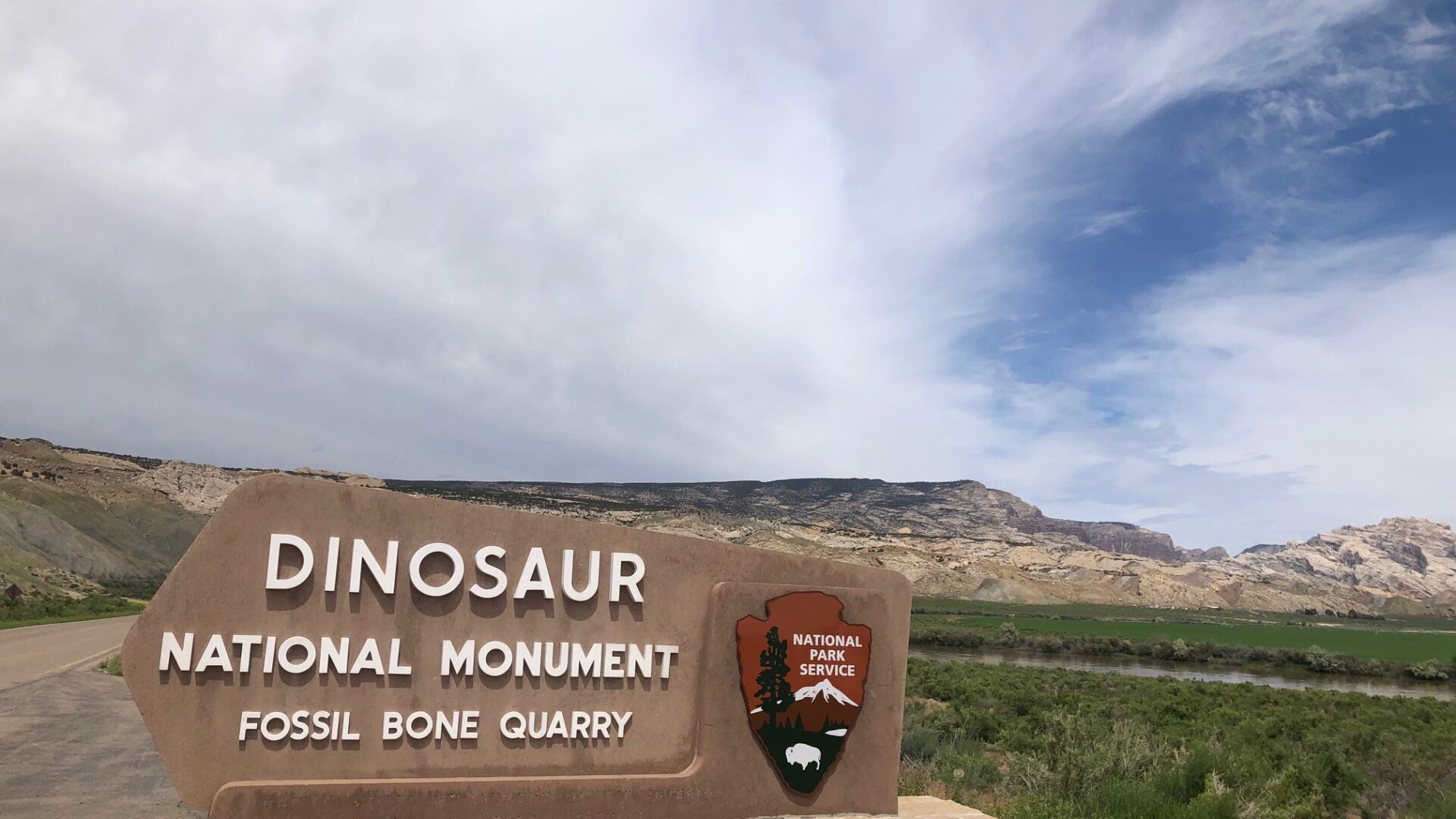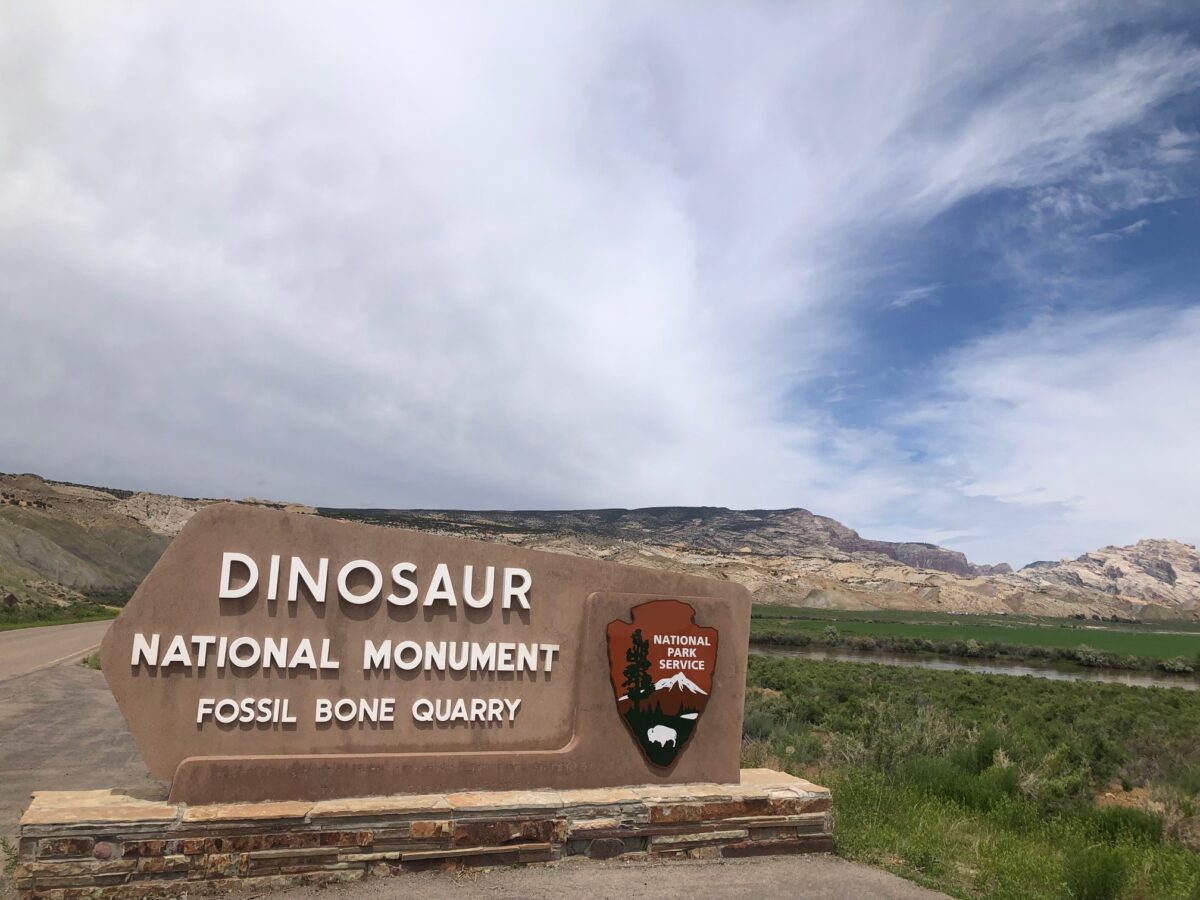Dinosaur National Monument – more than just dinosaurs!
Many people who visit the western United States focus their visits on the big national parks – the Grand Canyon, Zion, Bryce, Yellowstone… But if we were to venture some advice, consider some of the less well known national park units. They can offer ever bit as much in the way of scenery and experiences, without the crowds.
Dinosaur National Monument
One of these national park units is Dinosaur National Monument. Warning… you can’t simply drop by this park for a few hours or really even do it in a day. To fully experience Dinosaur National Monument, we’d recommend you stay in the area (or camp in the park) for at least 2 to 3 nights. That sounds like a long time, but this place is huge.
Not only does it include one of the earth’s largest fossil beds, there are also relics from ancient cultures, homesteaders and early settlers. Plus the canyons formed by the Green and Yampa Rivers, with soaring walls that encompass over 1 billion years of history in their stone layers. These canyons will match anything you’ll see in the Southwest.
Unlike some other national park units, you don’t have to be a hiker to really experience the park. The fossil exhibits are easily accessible and scenic drives take you to spectacular overlooks.
Dinosaur Quarry Exhibit Hall
Start your tour in Utah at the main visitor center nestled between the Green River and rocky hills. Park there to take the shuttle up to the Exhibit Hall, a huge structure that protects a rock face with over 1,500 fossils embedded in the rock.
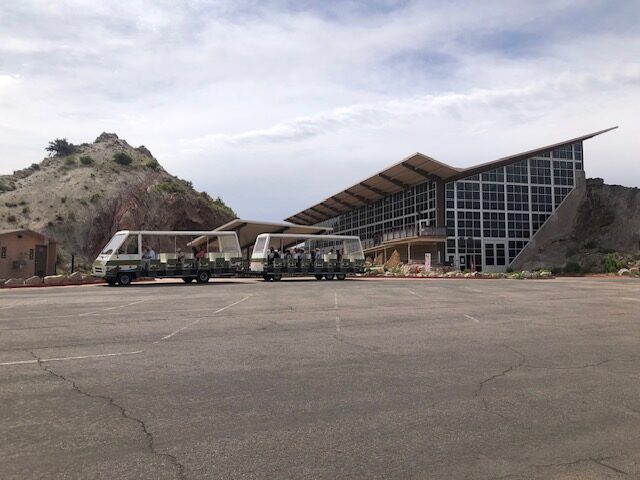
You can see the way the fossils were deposited and the ranger can point out which types of dinosaur bones you are looking at. There are also full sized replicas of the various dinosaurs that were found there. The most common is the Camarasauras, a 60 foot long herbivore (with a 30 foot poop!!!)
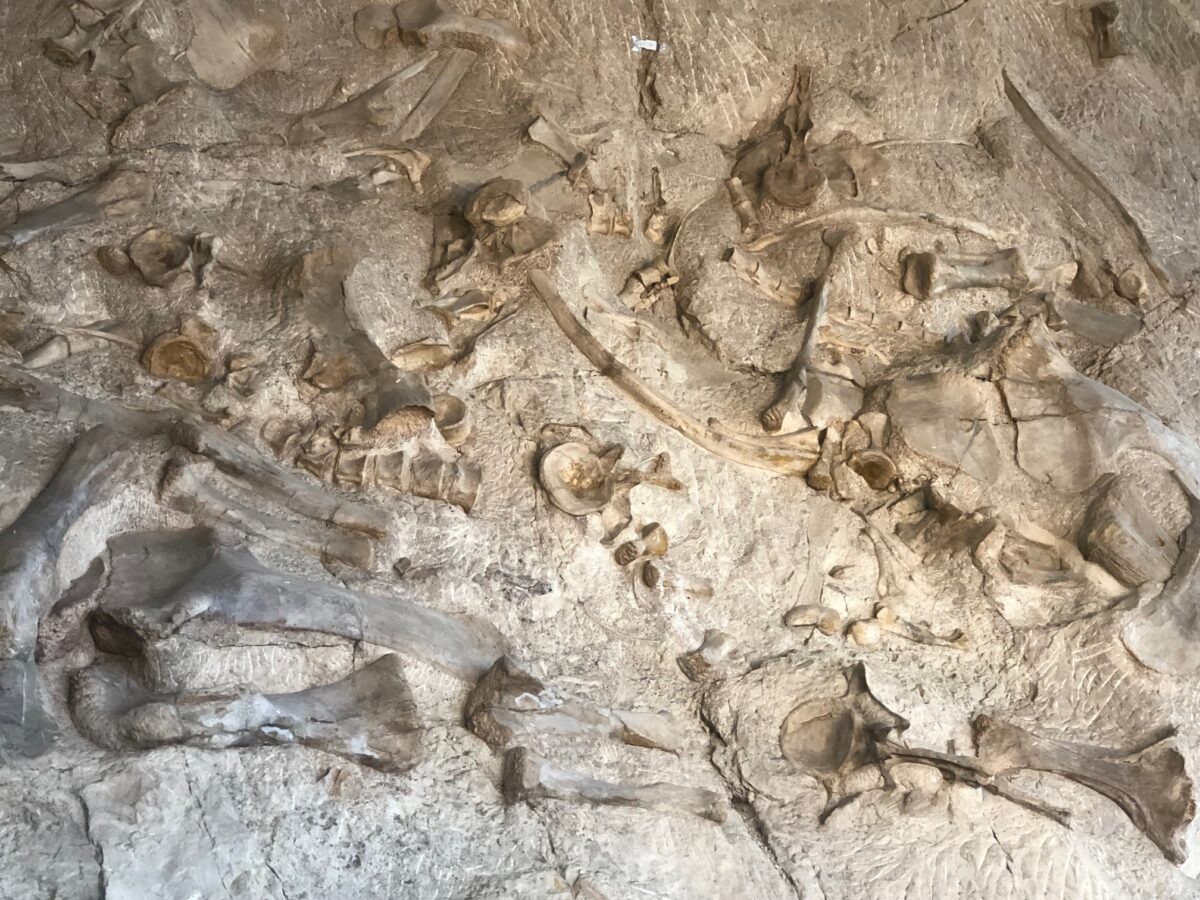
You can go right up to the wall of fossils and actually touch a femur that is almost 150 MILLION years old. It is just mind boggling.
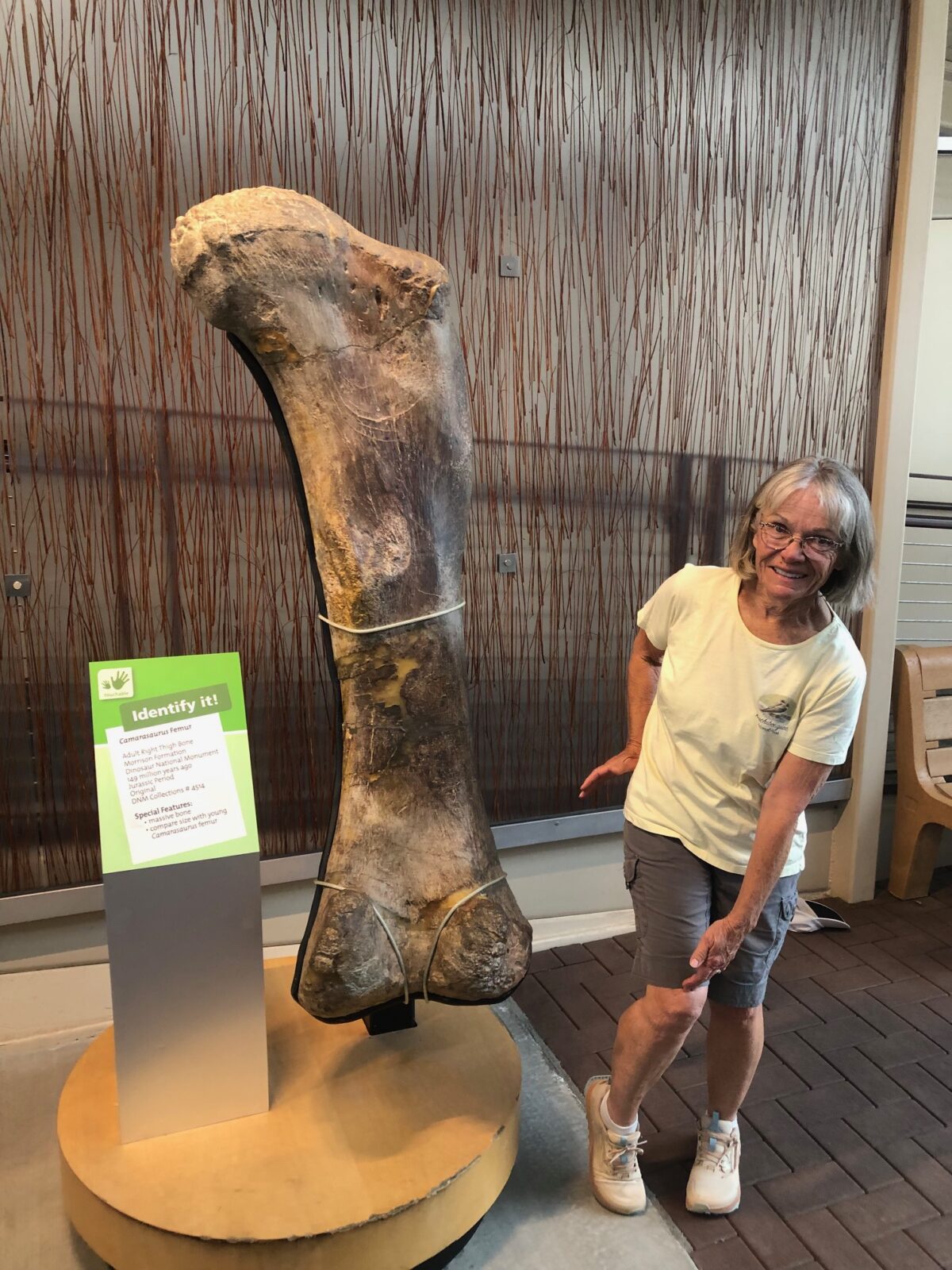
Unique to this place, they discovered a nearly complete skeleton of a juvenile Camarasauras – the most complete long necked dinosaur ever found. This really helped paleontologists to learn how to put together all the bits and pieces of various bones they had found. Up until that discovery, they weren’t quite sure where everything fit together to make a complete skeleton.
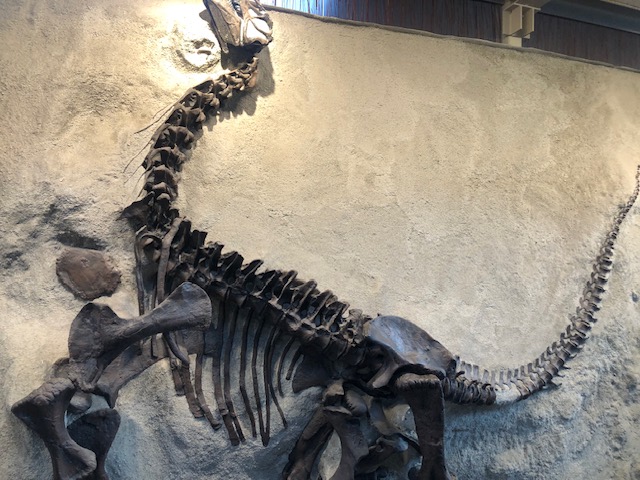
The wall of bones on display is 50 feet high; this is all that remains of 100+ foot tall hill where the fossils were found in 1909 by Earl Douglass. He was dispatched to Utah by Carnegie (the richest man in world at the time) who wanted fossil bones for his collection. So he sent Douglass to find some and funded the exploration.
Almost immediately Douglass found an intact vertebrae. Photos show how clearly visible it was and other photos show “dinosaur tourism” with local people bringing their families to see the fossils.
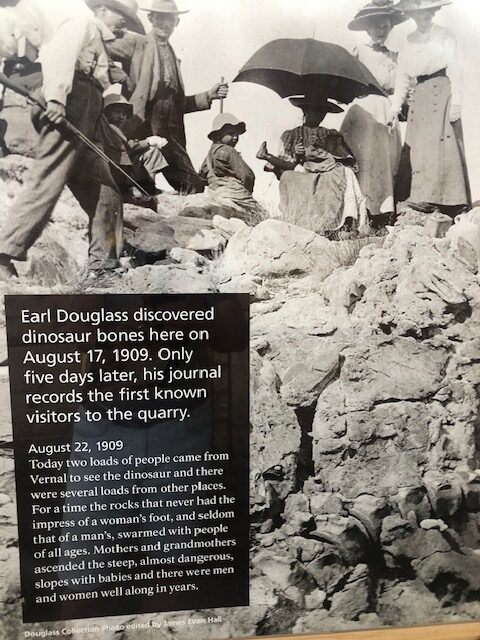
During the course of the next several years Douglass and his team removed several hundred tons of fossils to Pennsylvania for cataloging. Along with the full skeleton, they found dinosaur heads complete with teeth. Not just one, but four. This fossil site was incredibly rich. They had stumbled upon a “log jam of bones” where bones had washed downstream and were covered in silt, eventually becoming fossils. As the earth shifted these fossil beds were uplifted, bringing these 150 million year old bones to the surface.
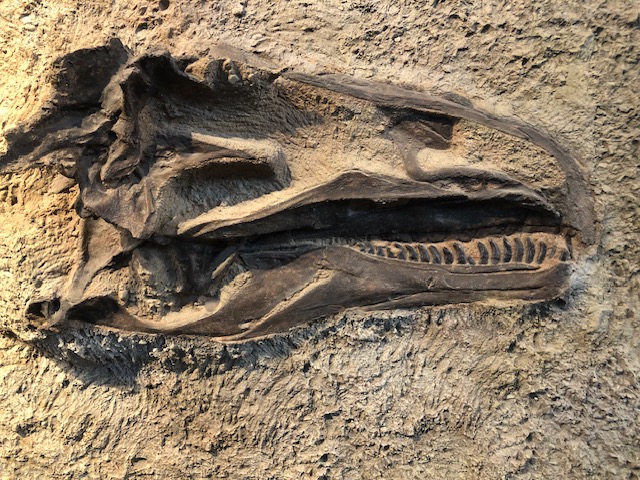
Other interesting photos in the exhibit show what a painstaking process it was to extract the bones, protect them in plaster, and move them to a train depot by horse to send back east. Certainly technology has made this much easier!
They excavated the majority of the fossils, but Douglass insisted on keeping a segment of the fossil bed intact to be shared with the public for future generations. That is what you see today, but there are diagrams that show the extent of the excavation. Initially only 80 acres of this dinosaur quarry area were protected in 1915 by President Coolidge. It was expanded to almost 210,000 acres in 1938 by President Franklin D. Roosevelt to protect not only the quarry, but also the history and natural beauty of the canyons.
Fossil Discovery Trail
To return to your vehicle you can take the shuttle, or you can walk downhill along the Fossil Discovery Trail.
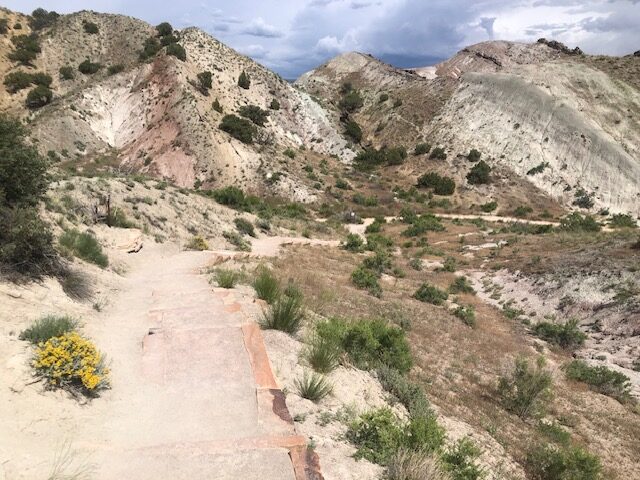
This short walk (1.2 miles) takes you right up to rocks with fossils exposed. Feel like a paleontologist as you look for fossils. There are clam shell impressions, dinosaur bones and fish scales, all very visible to the naked eye. It is cool to see the fossils outside of the enclosed exhibit, as Douglass and his crew would have seen them back in 1909.
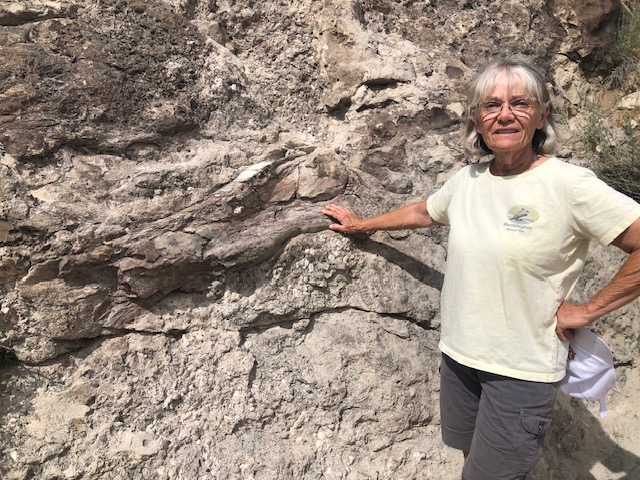
More than just Dinosaurs….
You will spend at least 2 hours at the quarry, but don’t stop there. There’s much more to see in the park. After the quarry, you can continue down the road to see historical exhibits. Then, plan a couple more days. One of them, make your way out Harper’s Corner Road to all the scenic overlooks. The other, take the scenic drive on the north side of the park on Jone’s Hole Road. You will not be disappointed that you spent the extra time.
Tour of the Tilted Rocks
Once you leave the quarry, don’t leave the park. Instead, turn left and follow Cub Creek Road for 12 miles. There are a number of pullouts where you can see additional aspects of the park. The first stop is at “Swelter Shelter” where they discovered stone tools as old as 7,000 years. (Not quite as old as the dinosaurs but pretty ancient in human time.) You can also see pictographs (paintings) on the rock walls that are estimated to be from the Freemont peoples about 1,000 years ago.
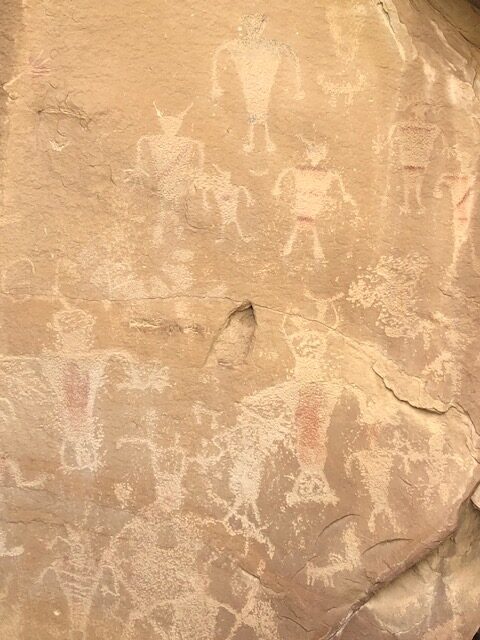
Continuing on this road, there are overlooks and pull offs where you can view interesting rock formations and more petroglyphs. At the end of the road, you come to Josie Morris Ranch. This adventurous woman lived here for 50 years all alone, fending for herself until she was 89 years old! You can wander through her small cabin, visit her orchards and walk to the box canyon she fenced off to confine her animals.
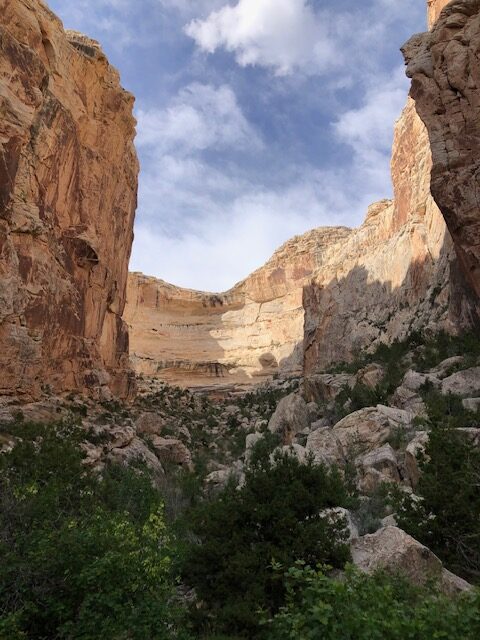
What a great story. She settled there in 1914 and raised and butchered her own livestock; cultivated and canned fruits and vegetables; and channeled water from the spring so that it didn’t flow off of her property. (Interesting application of water use laws! Be sure to read about that.) Sit a minute in her garden and reflect on what it would be like as an elderly lady to be out there all by yourself, at least 10 miles from anyone else. That’s a real pioneering spirit!
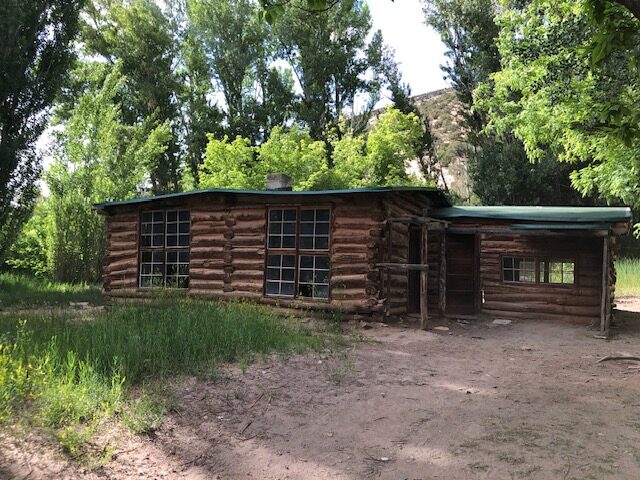
Green River Campground
If you are campers, you should try to make a reservation at Green River Campground in the park. Only open in the summer, campsites are nestled along the Green River and shaded by giant old cottonwood trees. It is super quiet and there is lovely walk along the river (dogs welcome). The River Trail goes between the Green River and Split Mountain campgrounds (3 miles round trip). You walk up onto the bluffs above the Green River with gorgeous views.
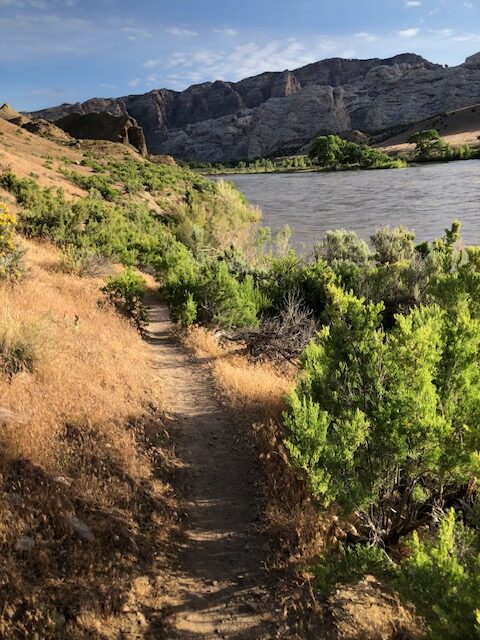
Sound of Silence Trail
If you are up to another 3.2 miles, you can continue from Split Mountain campground and walk on the Sound of Silence Trail. (You can also access this trail from Cub Creek Road.) It is a fun trail, designed for families, with lots of informational signs. Did you know that the color of lichen indicates air quality? That’s just one of the fun facts you will read along the way.
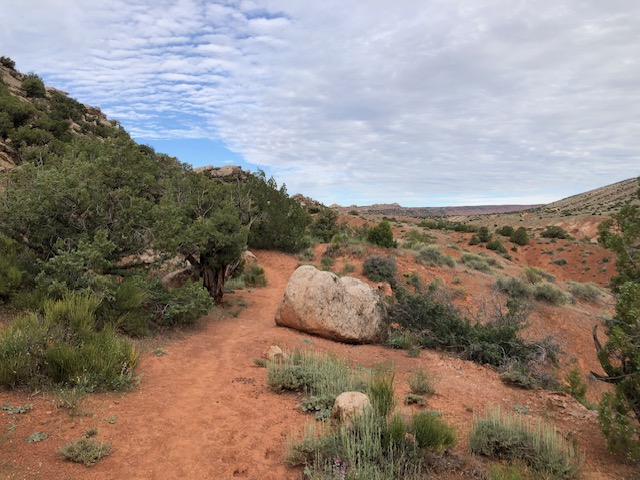
Harper’s Corner Road
Another entirely different view of the park comes on Harper’s Corner Road, a 62 mile round trip scenic drive that starts from the Canyon Visitor Center just outside Dinosaur, Colorado. It is a long drive, but the views are spectacular. You start out at around 5900 feet in elevation and steadily climb up to Harper’s Corner at 7580 feet. Most of the drive is through private land – lots of cows and sheep grazing beside (and sometimes on) the road. As you proceed, you will really see the changing vegetation and landscape, and there are lots of pullouts with informational signs and amazing views out over the valley.
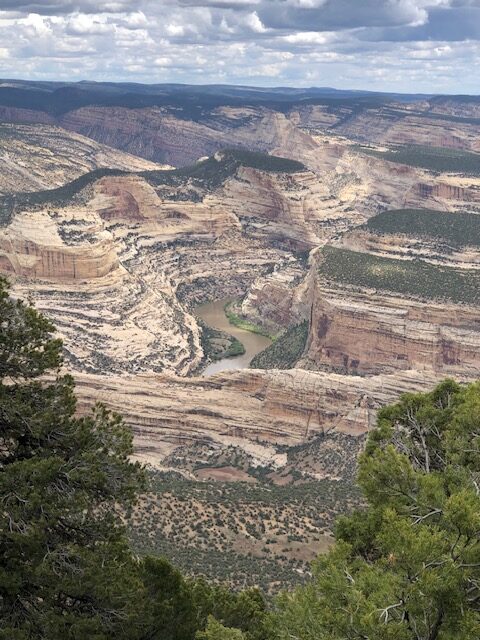
The road ends at Harper’s Corner, named for a local rancher who used the promontory there as a natural corral for his livestock. All he had to do was put a fence across the end and they couldn’t get out. There was no way they were going to escape down the steep cliffs on the other 3 sides! You will clearly see this if you take the short (2 mile roundtrip) trail out to the end. Don’t miss that. It’s not a difficult walk and the view from the end is absolutely spectacular.
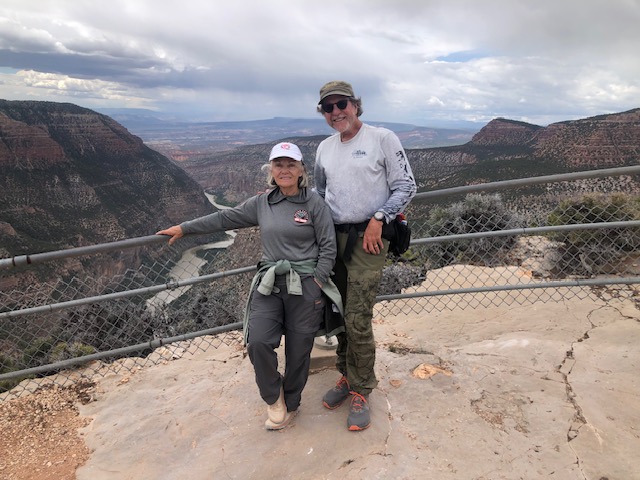
You can see both the Green and Yampa rivers as they wind through colorful canyons. The two rivers meet far below, although you can’t see the intersection from the overlook.

The amazing geology of the place is on display all around you, and the end provides a clear view into the Mitten Park Fault. For a better explanation than we will ever give, pick up a road guide at the visitor center.
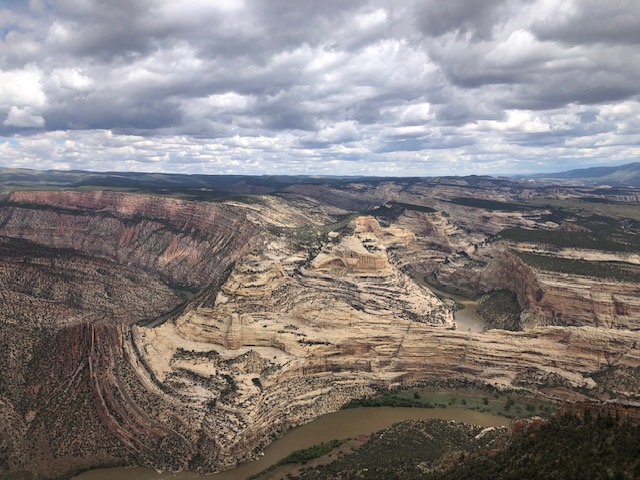
Jones Hole Road
Another long and scenic drive is on the north side of the park – 47 miles one way from the Utah Welcome Center in Jensen to the Jones Hole Fish Hatchery. Yes, this is a long drive but it is worth it. Most of the drive is on through private farmland – lots of cows grazing – but you are driving at the top of the world! It is not until just near the end of the road that you descend down a 10% grade into the canyon.
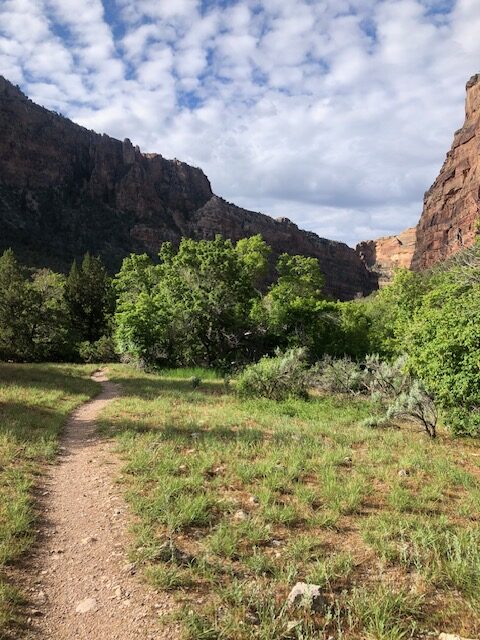
Once there, you can visit the fish hatchery (we didn’t even realize there were “national fish hatcheries”), have a picnic and take a hike on Jones Hole Trail. This is one of the nicest hikes in the park along a shaded path creek beside Jones Creek. It would be perfect for a family. Not too difficult and fun spurs that take you to Ely Creek Falls.
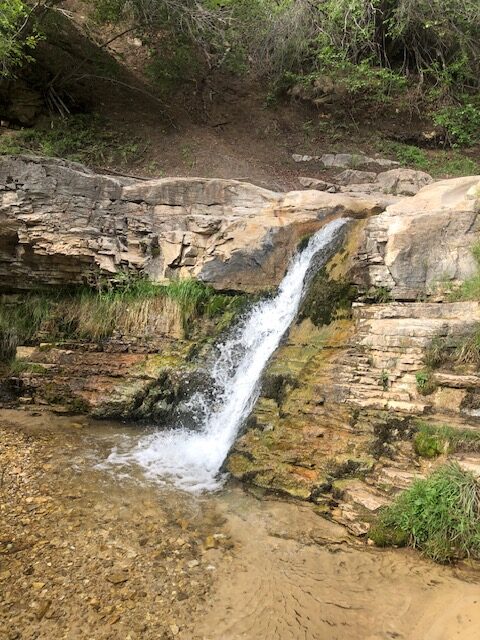
And another one that takes you right up alongside rocks with pictographs so brilliant they could have been made years ago when in fact up to 1400 years old.
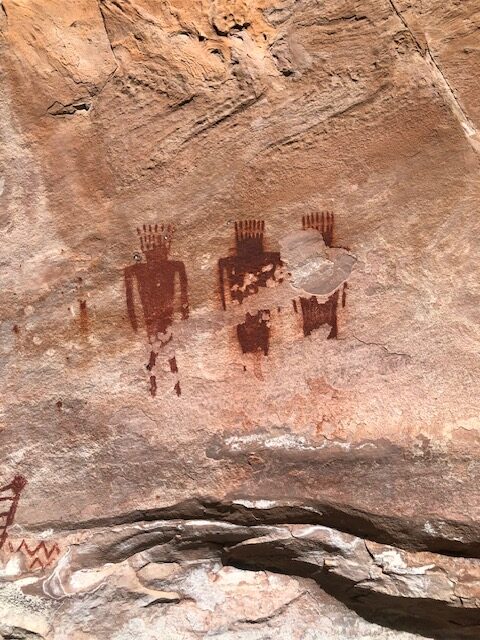
The entire trail is a bit over 8 miles, taking you all the way to a small beach on the Green River. A perfect spot for a picnic. When we were there, rafters floated by… made us think that our next outing there might be a raft trip.
Dino Quotes
We’d like to leave you with some of the thoughtful quotes we read when visiting the park. They really bring home the concept of how important our national park system is.
“You can rebuild the Parthenon, but you can’t rebuild a canyon.”
“Why do you want to save the desert? Because you can, and if you don’t it will be gone forever.”
“Silence is an endangered species. Dinosaur is a silent haven of quiet.”
“There is no shortage of water in the desert but exactly the right amount , a perfect ratio of water to rock, water to sand, insuring that wide free open, generous spacing among plants and animals, homes and towns and cities, which makes the arid West so different from any other part of the nation. There is no lack of water here unless you try to establish a city where no city should be.”
Edward Abbey
Are you trying to visit all the National Parks or National Park Units?
If your goal is to visit them, one or all, we’d love to help you strategize. Give us a call at (480) 609-3978 or drop us a note here. We always enjoy talking with people who share our passion for visiting these gems of the National Park Service.
#FindYourPark
#SeeAmericaFirst
